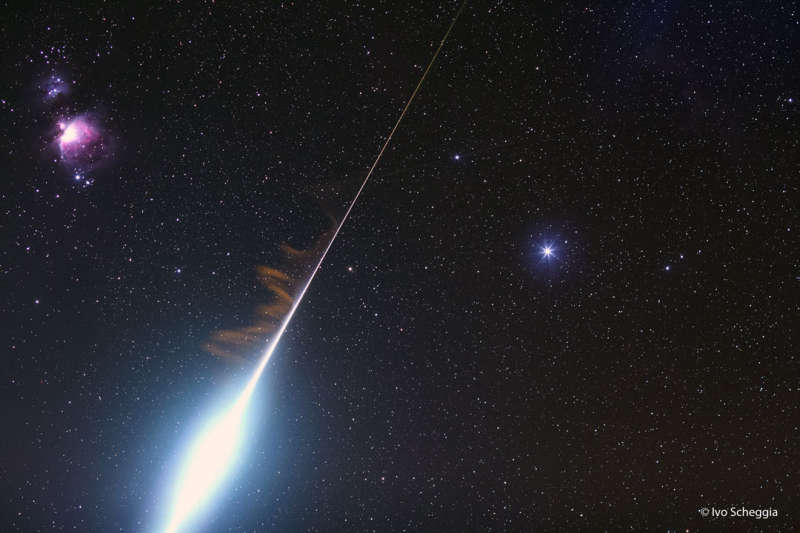Credit & Copyright: Ivo Scheggia
Explanation:
What's happening to that meteor?
A few days ago, a bright fireball was
photographed from the
Alps mountain range in
Switzerland as it blazed
across the sky.
The fireball, likely from the
Taurids meteor shower,
was notable not only for how bright it was, but for the rare orange light it created
that lingered for several minutes.
Initially, the orange glow made it seem like the
meteor trail was on fire.
However, the orange glow, known as a
persistent train, originated neither from fire nor sunlight-reflecting smoke.
Rather, the persistent train's glow emanated from atoms
in the
Earth's atmosphere in the path of the meteor -- atoms that had an
electron
knocked away and emit light during reacquisition.
Persistent trains often
drift,
so that the long 3-minute exposure actually captured the initial
wind-blown displacement of these bright former
ions.
The featured image was acquired when trying to image the famous
Orion Nebula, visible on the upper left.
The bright blue star
Rigel, part of the
constellation of Orion, is visible to the right.
This week the
fireball-rich Taurids meteor shower continues to be active even though it has
passed its peak,
while the more active
Leonids meteor shower is just peaking.
Follow APOD on:
Facebook,
Google Plus,
or
Twitter
Authors & editors:
Robert Nemiroff
(MTU) &
Jerry Bonnell
(USRA)
NASA Web Site Statements, Warnings,
and Disclaimers
NASA Official: Jay Norris.
Specific
rights apply.
A service of:
LHEA at
NASA /
GSFC
& Michigan Tech. U.
Based on Astronomy Picture
Of the Day
